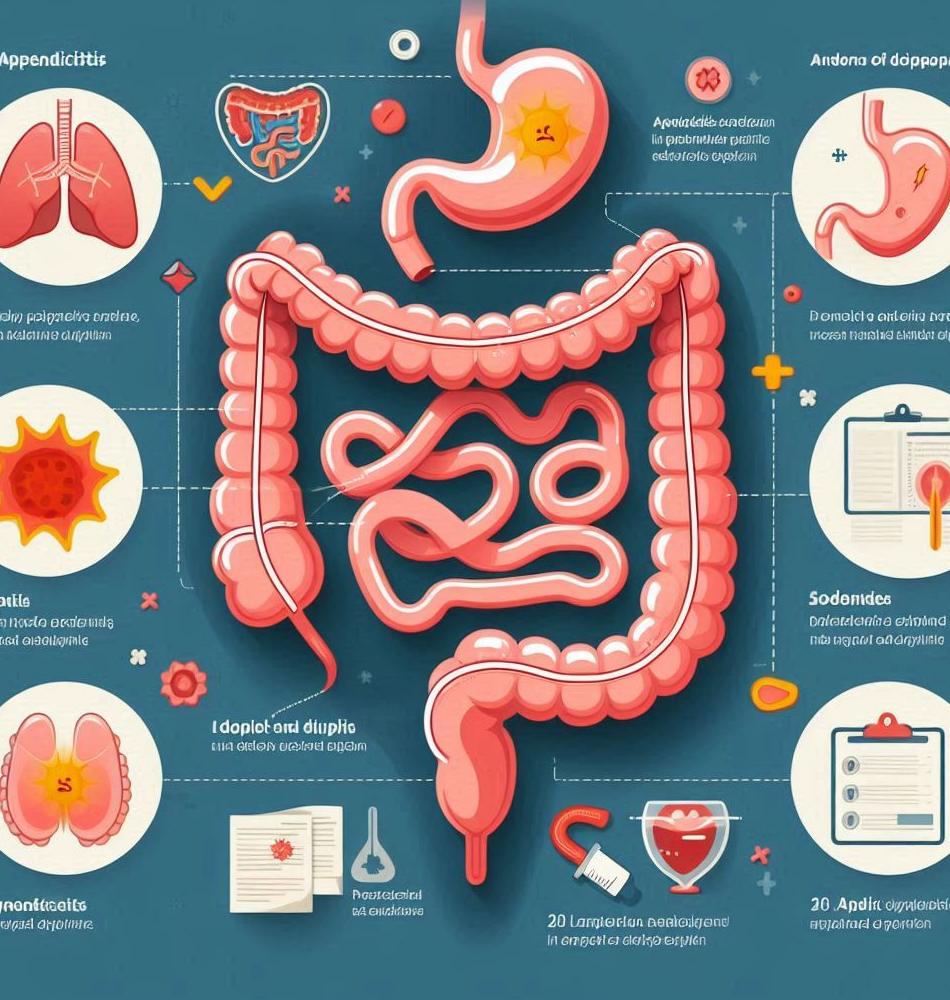Unraveling the Mystery: How to Diagnose Appendicitis 🩺
Appendicitis is often described as one of those sudden health emergencies that seem to come out of nowhere. One moment you’re having lunch, and the next, you’re gripped by a sharp pain that sends you rushing to the emergency room. Understanding how this condition is diagnosed can illuminate not just the medical processes involved, but also the acute attention needed to manage your health effectively. Let’s delve deep into the art and science of diagnosing appendicitis, unraveling the common signs, symptoms, and diagnostic tools along the way.
The Basics of Appendicitis: What You Should Know 🔍
Before diving into diagnosis, it is crucial to understand what appendicitis is. Put simply, appendicitis occurs when the appendix—a small, tube-like structure attached to the large intestine—becomes inflamed. This inflammation can lead to a painful situation requiring prompt medical attention, including possible surgery to remove the appendix. The challenge lies primarily in identifying whether pain in the abdomen is, in fact, appendicitis or something else entirely.
Common Symptoms of Appendicitis 🏥
Identifying appendicitis can often be tricky, as its symptoms can mimic those of other abdominal issues. However, certain signs typically point towards this condition:
- Severe pain in the lower right abdomen
- Nausea or vomiting
- Loss of appetite
- Fever
- Constipation or diarrhea
- Swelling in the abdomen
The Importance of Prompt Diagnosis 🕒
Early diagnosis of appendicitis is crucial as a delayed diagnosis can lead to complications, such as a ruptured appendix, which can cause severe infections. It leads us to the vital question: how exactly is it diagnosed?
Diagnostic Methods: From Physical Exams to Imaging Techniques 📊
Diagnosing appendicitis involves a multi-faceted approach, including physical examinations, patient history, and advanced imaging techniques. Understanding these processes will equip you with useful insight about the medical protocols doctors typically follow.
Step 1: The Medical History 📚
The first step in diagnosing appendicitis usually involves a detailed medical history. This is where the physician inquires about:
- The onset and duration of symptoms
- Location and intensity of pain
- Previous medical history of similar issues
- Family history of appendicitis
Step 2: Physical Examination ⚕️
Next up is a physical examination. During this evaluation, the doctor will:
- Inspect the abdomen for swelling or tenderness
- Palpate different areas of the abdomen to check for pain
- Assess rebound tenderness, a sign of irritation in the abdominal cavity
Step 3: Diagnostic Imaging Techniques 🖼️
If appendicitis is suspected, imaging tests are typically ordered to provide additional information. The most commonly used imaging techniques include:
- Abdominal ultrasound: Often used in children and pregnant women due to safety
- Computed tomography (CT) scan: This is a more detailed test that gives a clear picture of the appendix and surrounding organs
- X-rays: While less common for diagnosing appendicitis, they can sometimes help rule out obstructions
Blood and Urine Tests: What Do They Show? 🧪
Alongside imaging tests, blood and urine tests are important. A complete blood count (CBC) can reveal elevated white blood cell counts, indicating infection or inflammation. Meanwhile, a urinalysis may help exclude urinary tract infections as a source of pain.
Special Considerations: When to Seek Help 🚑
Knowing when to visit a healthcare provider is essential. Here are situations you should take seriously:
- If the pain is sudden and severe
- When pain migrates from the navel to the lower right abdomen
- If you experience persistent vomiting
- When symptoms continue for more than a day
FAQs: Common Questions About Diagnosing Appendicitis ❓
- What causes appendicitis? Answer: Appendicitis is usually caused by blockage of the appendix, leading to inflammation. Possible causes include infection, foreign bodies, or cancer.
- At what age is appendicitis most common? Answer: Appendicitis is more common between the ages of 10 and 30, although it can occur at any age.
- Can appendicitis resolve on its own? Answer: In some rare cases, inflammation may subside. However, it is not advisable to delay medical treatment due to the risks involved.
- What complications can arise from untreated appendicitis? Answer: Untreated appendicitis can lead to a ruptured appendix, triggering peritonitis or abscess formation, which are serious medical emergencies.
- Is recovery from appendicitis surgery quick? Answer: Most individuals recover within a few weeks after appendectomy, although full activity may take longer, depending on individual circumstances and post-operative care.
Conclusion: Navigating the Diagnosis of Appendicitis ⚖️
Appendicitis is a condition that demands prompt and accurate diagnosis to avert serious complications. Understanding the symptoms, diagnostic methods, and the importance of early intervention can empower individuals in their health journey. The intricate dance of medical evaluations, from physical assessments to advanced imaging, ensures that both patients and healthcare professionals can navigate this painful ailment with a sense of urgency and clarity. If you suspect you may have appendicitis, do not hesitate to seek medical attention. After all, timely action may just be the key to a speedy recovery.







